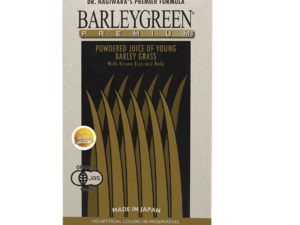Over 60% of those practicing time-restricted eating prefer the 16:8 approach—fasting 16 hours daily while eating within an 8-hour window. Yet many struggle with bloating or fatigue when restarting meals. What if a simple addition could ease this transition while boosting results?
Wellness Group Malaysia offers science-backed solutions tailored for modern lifestyles. Their prebiotic supplements nourish gut bacteria without disrupting fasting benefits, providing essential nutrients during extended non-eating periods. This approach helps maintain digestive comfort and improves nutrient uptake when meals resume.
Research shows proper supplementation supports metabolic flexibility—a key factor in successful fasting protocols. For Malaysians balancing busy schedules with wellness goals, strategic nutritional choices make time-restricted eating more sustainable. Digestive enzyme production plays a crucial role here, enhancing how the body processes nutrients after fasting.
Wellness Group’s team crafts formulas that align with various eating schedules. Their experts guide clients in selecting options that complement individual rhythms while addressing common challenges like energy dips or cravings. With personalized WhatsApp consultations (+60123822655), users gain actionable strategies to optimize their routines.
Key Takeaways
- The 16:8 method remains popular but requires smart nutritional support
- Specialized supplements maintain gut health during fasting windows
- Strategic nutrient timing enhances metabolic flexibility
- Professional guidance helps customize approaches for better results
- Local expertise ensures solutions fit Malaysian lifestyles
Overview of Intermittent Fasting and Fiber Benefits

Click to LEARN MORE
Time-restricted nutrition plans have gained traction not just as diet trends but as science-backed lifestyle strategies. The 16:8 method—eating within an 8-hour window—aligns with natural circadian rhythms, helping the body optimize energy use. Studies link this approach to improved metabolic health and even potential longevity benefits.
How Intermittent Fasting Works
When you limit eating hours, your system activates survival mechanisms. After 12-14 hours without food, it starts burning stored fat (ketosis) and repairs cells (autophagy). These processes boost insulin sensitivity and energy efficiency. Popular methods include:
- 16:8: Daily fasting with meals in an 8-hour block
- 5:2: Two low-calorie days weekly
- Alternate-day: Cycling between regular and restricted intake
Key Benefits of Adding Fiber
Strategic nutrient choices during eating windows amplify results. Soluble options like Performance Lab® Prebiotic (4 calories/serving) feed gut microbes without disrupting fasting states. This supports:
- Steady blood sugar levels during non-eating periods
- Reduced hunger signals through prolonged fullness
- Efficient detox pathways via improved digestion
Research reveals combining these approaches enhances fat-burning while preserving muscle mass—critical for sustainable weight management. It also eases the transition into meals, preventing post-fast discomfort.
Understanding the Science Behind Fiber for Intermittent Fasting Support
Recent breakthroughs reveal how gut bacteria shape fasting outcomes. When strategically supported, these microbes become powerful allies in achieving metabolic flexibility and digestive comfort.

Gut Microbes: The Unsung Heroes
Prebiotic compounds work differently than typical supplements. They resist digestion until reaching the colon, where they fuel beneficial bacteria. This process creates short-chain fatty acids (SCFAs) that strengthen the intestinal barrier. “SCFAs act as both energy sources and signaling molecules,” notes a 2023 Nutrition Reviews study.
These microbial byproducts improve insulin sensitivity—critical for maintaining stable blood sugar during non-eating windows. Research shows participants using targeted supplements reduced post-meal glucose spikes by 18% compared to placebo groups.
The gut-brain axis also plays a role. Balanced microbiota produce neurotransmitters that support mental clarity during extended fasts. This explains why some users report fewer cravings and improved focus.
Quality formulas like Performance Lab® Prebiotic deliver these gut-nourishing benefits with just 4 calories per serving. Their low-impact design preserves fasting states while promoting systemic health improvements.
Step-by-Step Guide to Incorporating Fiber into Your Fasting Routine
Effective fasting isn’t just about when you eat—it’s also about what you consume. This guide helps optimize nutritional strategies for better digestion and sustained energy.
Choosing the Right Fiber Sources
Start by separating intake strategies for fasting and eating periods. During non-eating windows, use prebiotic supplements like Performance Lab® Prebiotic. These deliver gut-supporting benefits without adding calories that break ketosis.
When meals resume, prioritize whole-food options:
- Leafy greens and tropical fruits (mango, papaya)
- Local whole grains like brown rice or oats
- Nuts and seeds for sustained energy
Avoid high-calorie prebiotic-rich foods like onions or garlic during fasting. Save them for your eating window to maximize nutrient absorption.
Establishing an Effective Eating Window
Popular schedules in Malaysia include 10 a.m.–6 p.m. or noon–8 p.m. Choose a timeframe allowing 2-3 balanced meals. Here’s how to structure them:
- Begin with a fiber-rich breakfast (oatmeal with chia seeds)
- Include protein and healthy fats at lunch (grilled fish with quinoa)
- End with a lighter dinner (stir-fried vegetables)

Click to LEARN MORE
Gradually increase fiber intake over 2-3 weeks to prevent bloating. Pair supplements with water during fasting hours to maintain gut health without disrupting metabolic processes.
Struggling with cravings? Try splitting fiber intake between meals and supplements. This balances blood sugar while keeping hunger signals in check throughout the day.
Tips and Tricks for Sustaining a Healthy Fasting Lifestyle
What separates occasional fasters from those who maintain it long-term? Smart strategies that address both physical needs and daily habits. Simple adjustments can transform challenging routines into sustainable practices.

Hunger Management Made Practical
Stay ahead of cravings with timed hydration. Sip water infused with mint or lime slices—these add flavor without calories. Studies show drinking 500ml of water reduces hunger by 13% for 30-60 minutes.
Try these appetite-suppressing tactics:
- Walk briskly for 15 minutes when cravings strike
- Chew sugar-free gum during mid-fasting hours
- Use aroma therapy with citrus scents
Meal Strategies That Keep You Fuller
Build meals around slow-digesting foods. Lentils, oats, and avocado create lasting fullness. A 2024 trial found participants who ate 30g of chia seeds with breakfast reported 22% less afternoon hunger.
“Strategic eating windows paired with high-satiety foods make fasting feel effortless,” notes Kuala Lumpur nutritionist Dr. Aminah Tan.
Handling Transition Challenges
New to fasting? Start with 12-hour windows, adding 30 minutes every 3 days. This gradual approach helps avoid:
- Morning headaches (try Himalayan salt in water)
- Midday energy slumps (adjust meal timing)
- Evening cravings (opt for herbal teas)
Most side effects fade within 2-3 weeks as metabolism adapts. Track progress using apps like Fastic or Zero to stay motivated. Remember—consistency beats perfection in building lasting habits.
Customizing Your Fasting Windows for Optimal Results
Finding your ideal eating schedule works like a fingerprint—unique to your body’s needs and daily rhythm. This personalization helps maximize benefits while minimizing disruptions to work or family commitments.
Aligning Meal Times with Your Body Clock
Morning-focused eating patterns often suit those with standard work hours. Research shows finishing meals by 7 p.m. improves blood sugar control and sleep quality. Night shift workers might flip their schedule, eating between 2-10 p.m. instead.
| Window Type | Daily Focus | Best For |
|---|---|---|
| 12:12 | Consistency | Beginners |
| 14:10 | Metabolic boost | Weight loss |
| 16:8 | Fat burning | Experienced fasters |
| 18:6 | Deep ketosis | Specific health goals |
“Your last meal should align with sunset in tropical climates—this syncs with natural metabolic slowdown,” advises Dr. Lee Mei Ling, Kuala Lumpur chronobiology researcher.
Adapting Your Routine for Personalized Goals
Frequent travelers might use rotating windows: 14:10 on flight days, 16:8 when settled. Those managing health conditions should track energy levels and consult professionals when adjusting schedules.
Parents juggling school runs could try 12-8 p.m. eating periods. This allows family dinners while maintaining 16 hours of fasting. Remember—what works during Ramadan might need tweaking for everyday life.
Gradual changes prove most sustainable. Start with 1-hour weekly adjustments to eating windows. Monitor how different approaches affect mood and physical performance. This trial-and-error process helps create lasting habits tailored to individual needs.
Wellness Group: Your Partner for Healthy Fasting
Balancing nutritional needs with time-restricted eating becomes simpler with expert guidance. Wellness Group stands as Malaysia’s go-to resource for those pursuing sustainable health improvements through structured eating plans. Their team crafts strategies that align with local lifestyles, helping people navigate challenges like meal timing and nutrient balance.
Contact Information and Business Hours
Available Monday-Friday from 9:30 am to 6:30 pm, and weekends 10 am-5 pm, Wellness Group’s specialists provide tailored advice on integrating whole grains, fruits, and vegetables into eating windows. Whether managing weight goals or optimizing diet quality, their evidence-based methods adapt to individual needs.
Connect via WhatsApp: +60123822655
Busy schedules? Use their WhatsApp service for quick consultations about protein-rich meals or troubleshooting energy dips. This direct line to nutrition experts helps users refine their approach without disrupting daily routines. Real-time support makes sticking to food plans easier than ever.
FAQ
Can fiber help manage hunger during fasting periods?
Yes! High-fiber foods like whole grains, fruits, and vegetables slow digestion, keeping you fuller longer. This reduces cravings and stabilizes blood sugar, making it easier to stick to a fasting window.
How does intermittent fasting affect weight loss and metabolism?
Fasting triggers fat burning by depleting glucose stores. Combined with a calorie deficit, it promotes weight loss while preserving muscle. Adding nutrient-dense meals during eating windows supports metabolic health.
Are there specific fiber-rich foods recommended for fasting diets?
Opt for avocados, chia seeds, lentils, and leafy greens. These foods provide soluble and insoluble fiber, which aids digestion and enhances satiety without spiking insulin levels.
What role does gut health play in intermittent fasting success?
A balanced gut microbiome improves nutrient absorption and reduces inflammation. Prebiotic fibers from garlic, onions, and oats feed beneficial bacteria, supporting overall wellness during fasting cycles.
How can someone new to fasting avoid common side effects like fatigue?
Start with shorter fasting windows (e.g., 12–14 hours) and hydrate well. Gradually increase fiber intake to prevent digestive discomfort, and prioritize protein-rich meals to maintain energy levels.
Does Wellness Group offer personalized fasting plans?
Absolutely! Wellness Group tailors routines based on individual goals, whether for weight management, blood sugar control, or heart health. Reach out via WhatsApp at +60123822655 for customized guidance.
Can intermittent fasting benefit those with prediabetes or type 2 diabetes?
Research suggests fasting improves insulin sensitivity and lowers blood sugar levels. Always consult a healthcare provider before starting, especially if managing chronic conditions like diabetes.
What beverages are allowed during fasting windows?
Stick to water, black coffee, or herbal teas. Avoid sugary drinks or additives that break a fast. Adding electrolytes can help maintain energy without disrupting the fasting state.






